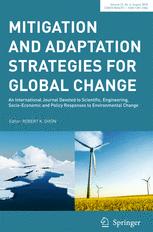View Item
- xmlui.general.dspace_homeCentros Regionales y EEAsCentro Regional Patagonia SurEEA Santa CruzArtículos científicosxmlui.ArtifactBrowser.ItemViewer.trail
- DSpace Home
- Centros Regionales y EEAs
- Centro Regional Patagonia Sur
- EEA Santa Cruz
- Artículos científicos
- View Item
Better estimates of soil carbon from geographical data: a revised global approach
Abstract
Soils hold the largest pool of organic carbon (C) on Earth; yet, soil organic carbon (SOC) reservoirs are not well represented in climate change mitigation strategies because our database for ecosystems where human impacts are minimal is still fragmentary. Here, we provide a tool for generating a global baseline of SOC stocks. We used partial least square (PLS) regression and available geographic datasets that describe SOC, climate, organisms, relief,
[ver mas...]
Soils hold the largest pool of organic carbon (C) on Earth; yet, soil organic carbon (SOC) reservoirs are not well represented in climate change mitigation strategies because our database for ecosystems where human impacts are minimal is still fragmentary. Here, we provide a tool for generating a global baseline of SOC stocks. We used partial least square (PLS) regression and available geographic datasets that describe SOC, climate, organisms, relief, parent material and time. The accuracy of the model was determined by the root mean square deviation (RMSD) of predicted SOC against 100 independent measurements. The best predictors were related to primary productivity, climate, topography, biome classification, and soil type. The largest C stocks for the top 1 m were found in boreal forests (254 ± 14.3 t ha−1) and tundra (310 ± 15.3 t ha−1). Deserts had the lowest C stocks (53.2 ± 6.3 t ha−1) and statistically similar C stocks were found for temperate and Mediterranean forests (142 - 221 t ha−1), tropical and subtropical forests (94 - 143 t ha−1) and grasslands (99-104 t ha−1). Solar radiation, evapotranspiration, and annual mean temperature were negatively correlated with SOC, whereas soil water content was positively correlated with SOC. Our model explained 49% of SOC variability, with RMSD (0.68) representing approximately 14% of observed C stock variance, overestimating extremely low and underestimating extremely high stocks, respectively. Our baseline PLS predictions of SOC stocks can be used for estimating the maximum amount of C that may be sequestered in soils across biomes.
[Cerrar]

Author
Duarte Guardia, Sandra;
Peri, Pablo Luis;
Amelung, Wulf;
Sheil, Douglas;
Laffan, Shawn W.;
Borchard, Nils;
Bird, Michael I.;
Dieleman, Wouter;
Pepper, David A.;
Zutta, Brian;
Jobbagy Gampel, Esteban Gabriel;
Silva, Lucas C. R.;
Bonser, Stephen P.;
Berhongaray, Gonzalo;
Piñeiro, Gervasio;
Martinez, Maria Jose;
Cowie, Annette L.;
Ladd, Brenton;
Fuente
Mitigation and Adaptation Strategies for Global Change : 1–18 (May 2018)
Date
2018-05
ISSN
1381-2386
1573-1596
1573-1596
Formato
pdf
Tipo de documento
artículo
Palabras Claves
Derechos de acceso
Restringido
 Excepto donde se diga explicitamente, este item se publica bajo la siguiente descripción: Creative Commons Attribution-NonCommercial-ShareAlike 2.5 Unported (CC BY-NC-SA 2.5)
Excepto donde se diga explicitamente, este item se publica bajo la siguiente descripción: Creative Commons Attribution-NonCommercial-ShareAlike 2.5 Unported (CC BY-NC-SA 2.5)

